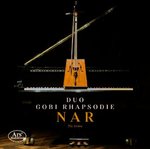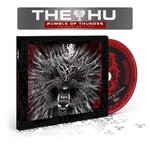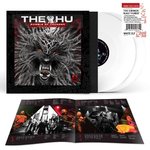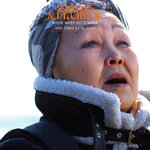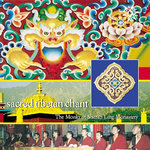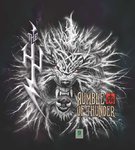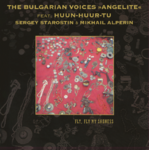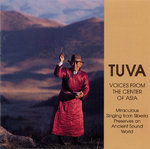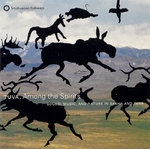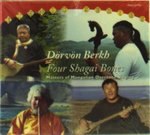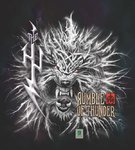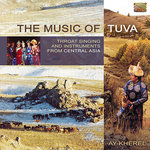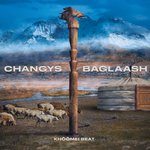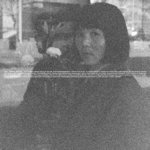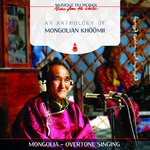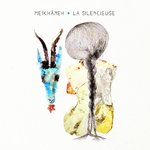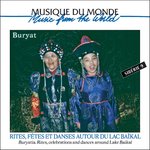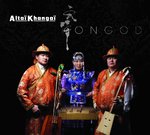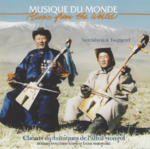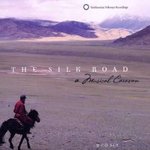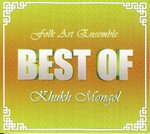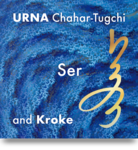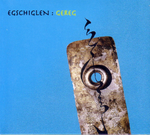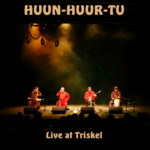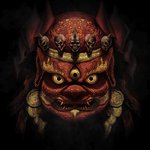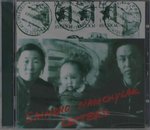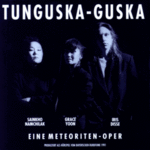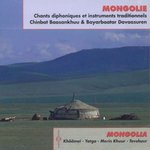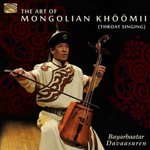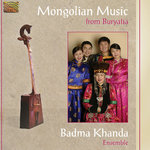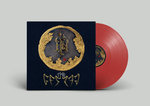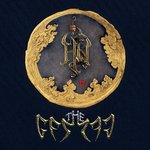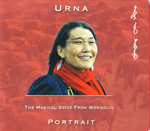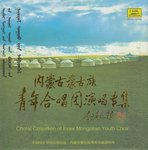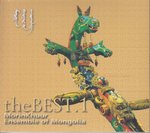Edles & Schönes CD´s, LP´s ... (Musik)
CD´s, LP´s ... (Musik)

| 1 - 50 von 104 Ergebnissen |
|
Egschiglen
The band Egschiglen ("Beautiful melody") was founded in 1991 by master students of the conservatory of Ulaanbaatar. Still today 4 founding members are the heart of the group. From the very beginning, the musicians are focusing on contemporary music of Mongolia and searching systematically for the sound dimensions of this repertory with their traditional instruments and the central asian vocal technics. The music of a country is formed by its landscape and the way of life of its people. Mongolia, in the heart of Asia, is a vast country, roughly five times the size of Germany. Endless graslands in the south envelope into the barren beauty of the Gobi desert. From the snow-covered Altai and Changaj mountains clear rivers run through forests and flatlands. A large part of the more than 2 million Mongolians still live as nomads to this very day, in harmony and rhythm with nature, and together with their "five jewels": horses, camels, cattle, sheep and goats. The music of the Mongolians breathes the freedom and power of the simple way of life close to the nature. Magnificant lucidity - is the fruit of years of research and travel between the conservatory of Ulaan Baatar, capital of Mongolia, and Röthenbach a. d. Pegnitz, small village in Germany. In this most southern German area of Franconia, the Egschiglen musicians regularly erected their traditional yurts to be nearer to European concert halls. What a distance they have covered since 1991 when the group, firmly rooted in tradition, was founded by a handfull students with commited contemporary attitudes! Their first performances were modern Mongolian compositions written by fellow compatriots of the Soviet school. Their sucesses in the West were few due to audiences mostly accustomed to traditional folk music.Hosoo (Dangaa Khosbayar) & Transmongolia
Die Musik von Hosoo (Dangaa Khosbayar) und Transmongolia gibt der Natur eine Stimme Mongolei. Das Steppenland in Zentralasien steht für die unberührte Natur, das Nomadenleben, die Jurten aus Filz, die schier endlose Weite der Steppe, die Wüste Gobi, das Altai-Gebirge. Wind weht, Pferdehufe dröhnen und die Steppe erwacht Wie sehr die umherziehende Nomaden, ihre Schafherden, die Pferde und Kamele, die Winde und Wolken, die Berge und Gräser mit Musik und Gesang verbunden sind, zeigt uns Hosoo Transmongolia auf sehr lebendiger Art und Weise. Denn Musik ist dort noch Teil des Lebens und Ausdruck freudvoll - ehrerbietiger Lebensfreude. Eine musikalische Reise ins unendlich weite Grasland, wo Mensch und Kamel miteinender weinen. In der Mongolei entwickelte sich Höömii im Laufe der Jahrhunderte aus der innigen Naturverbundenheit der Nomaden. Die Tiere, und da vor allem die Kamele und Pferde, die Flüsse und Berge, die Winde der Steppen und Wüsten werden vom Höömii-Sänger besungen und nachgeahmt. So entsteht ein wirkliches Singen mit und in der Natur Hosoo Transmongolia gibt der Natur eine Stimme und bringt die Weiten der Steppe in den Konzertsaal.Huun Huur Tu
Sasha Bapa, sein Bruder Sayan und zwei weitere Musiker, Kaigal-ool Khovalyg and Albert Kuvezin gründeten HUUN-HUUR-TU 1992, um sich auf die Präsentation von alten und vergessenen Liedern zu konzentrieren, wie Sasha es ausdrückt.
1993 spielte das Ensemble Huun-Huur-Tu erstmals in Amerika und erzielte binnen kurzer Zeit überwältigende Erfolge. Ihr “Khoomei” oder “Throat singing” – wie die Amerikaner sagen, der Obertongesang ist eine der faszinierendsten Vokaltechniken der Welt. Schnell erreichte das Ensemble einen “Kultstatus” in der neuen Welt, veröffentlichte dort mittlerweile sechs CD’s und erfreut sich weiter wachsender Popularität. Die Kultur der Tuvenen ist der mongolischen verwandt und spiegelt den Respekt vor der Natur wieder.
Huun-Huur-Tu spielte im Amerika u. a. zusammen mit dem Kronos Quartet, Frank Zappa – dem sie das Lied “Ching Söörtükchülerining Yryzy” (Song of the Caravan Drivers) gewidmet haben – , den Chieftains und L. Shankar.
Huun-Huur-Tu Stil
Unüberhörbar gibt es einen rituellen Charakter in dieser Musik, aber alle meditativen Tendenzen tilgt Huun-Huur-Tu durch eine stark rhythmische Ausrichtung. Zutiefst geheimnisvoll bleibt dieser faszinierende Obertongesang, der bis zu drei Melodien gleichzeitig erklingen lassen kann.
Kehlkopfgesang - Höömij
traditionelle Höömij Musik aus der MongoleiMongolei Festival
Gruppen und Künstler beim Mongolei Festival in Bärstadt Das 8. Mongoleifestival in Bärstadt vom 6. - 8. September 2013 www.mongolei-festival.de/Pop
mongolischer PopSainkho Namtchylak
“All will come to an end. You will remaina star not yet discovered by anyone” Sainkho Namtchylak (2014)
“Like A Bird Or Spirit, Not A Face”, is what Tuvan legend Sainkho Namtchylak said was the vision for her next album. She specified further that her desire was to work with north African musicians. Unbeknownst to her, the producer, Ian Brennan, had by coincidence and/or fate just won a Grammy, producing Malian group, Tinariwen.
They convened with Tinariwen,s rhythm section in France. In a whirlwind two days, they wrote and recorded onthespot over a double album’s worth of material, combining the two nomadic traditions. Though a continent apart, the artists found common ground between the two cultures, each who have struggled for survival and independence.
With the world’s foremost female throatsinger at the helm, the collaboration pushed the Tuareg musicians to new heights, blending techniques and atmosphere to create one of the more unique and ethereal records one is likely find anywhere. All three artists walked away stating that it was one of the best experiences creatively that they had ever had.
Sung in Tuvan, Russian, and English, the music ranges from steppe punkrock to droning moodpieces to epic ballads.
Mixed by Irish engineer David Odlum (Tinariwen, The Frames), the music reaches an unclassifiable place, where timelessness and quality transcend any single identifiable genre.
Soundtracks
FilmmusikTUWA
Musik aus der Region Tuwa
Tuwa liegt im Süden Russlands an der nordwestlichen Grenze der Mongolei und ist eingerahmt von den Gebirgen Westlicher Sajan im Norden, Tannu-ola im Süden und dem Altai im Westen.

